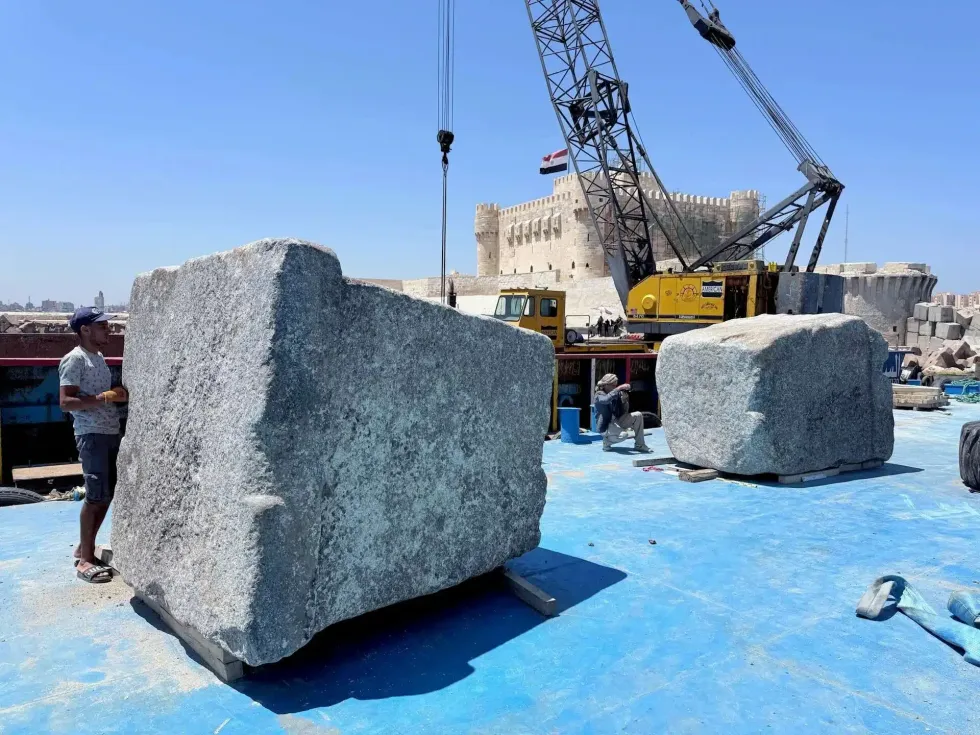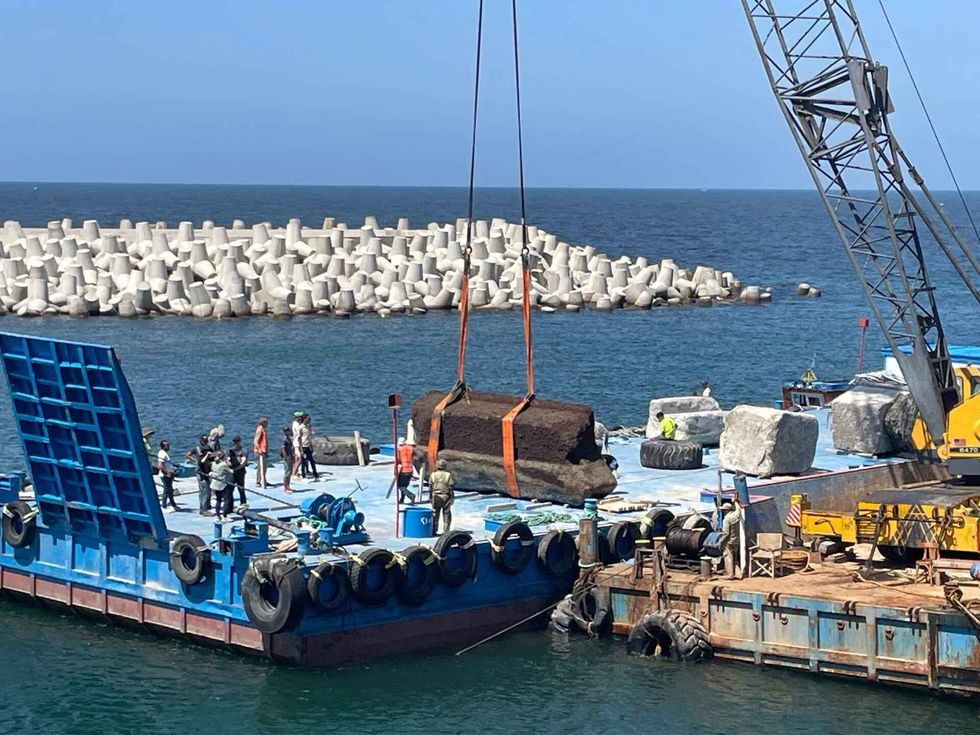Archaeology breakthrough as remains recovered from one of the Seven Wonders of the Ancient World in groundbreaking discovery
The Wonder of the World existed over 2,000 years ago
Don't Miss
Most Read
Latest
Remains from of the ancient Lighthouse of Alexandria have been recovered in a groundbreaking discovery.
Led by French archaeologist Isabelle Hairy, 22 colossal stone blocks have been retrieved from the submerged ruins of the lighthouse.
The operation, conducted beneath Mediterranean waters, is a major milestone in attempts to digitally reconstruct this Wonder of the World.
Working under Egypt's Ministry of Tourism and Antiquities Authority, Hairy's team brought the centuries-old architectural remnants back to the surface.

The archaeologists recovered 22 stone blocks
|GEDEON Programmes/CEAlex
The retrieved architectural elements comprise the lintels and uprights from a monumental doorway alongside a threshold and substantial foundation slabs.
Each of these massive components weighs between 70 and 80 tonnes, showing the lighthouse's extraordinary scale and engineering ambition.
Among the discoveries are portions of a previously undocumented pylon that incorporates a doorway showcasing a remarkable fusion of Egyptian architectural principles with Greek construction techniques.
The recovered blocks will undergo photogrammetric processing before engineers from La Fondation Dassault Systèmes take over for virtual repositioning work.
LATEST DEVELOPMENTS
This technology enables the creation of a comprehensive digital reconstruction showing how the 100-metre-tall lighthouse originally appeared and potentially how it collapsed.
The current mission expands an existing digital archive containing more than 100 scanned submerged architectural pieces from the past decade.
These virtual reconstruction efforts aim to reveal the monument's former grandeur.
The Lighthouse of Alexandria, also known as the Pharos of Alexandria, was located on a small island at the mouth of the harbours where it once stood.

The blocks were recovered beneath Mediterranean waters
|GEDEON Programmes/CEAlex
Built around 280BC under the reign of the Pharao Ptolemy II Philadelphus - the son of Ptolemy I, one of Alexander the Great's key generals.
The lighthouse was a major technological breakthrough at the time, with its light being produced by a large fire fueled by either wood or oil.
Its beam could be seen for up to 30miles, according to ancient writers.
It was "highly celebrated" by the time of Pliny the Elder, a Roman author who wrote about the lighthouse hundreds of years after it had been built.











